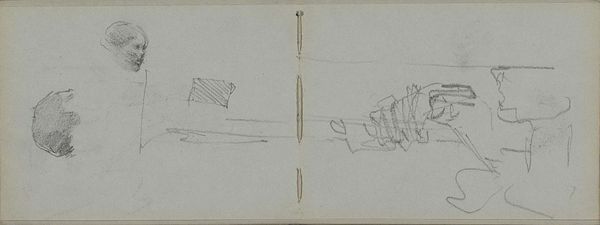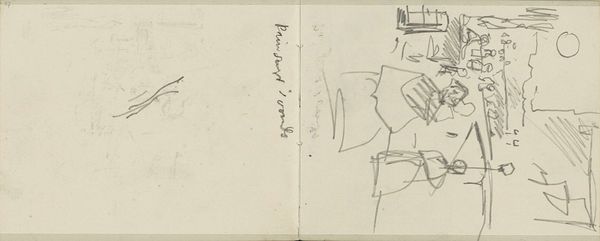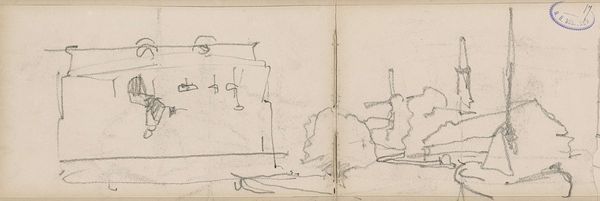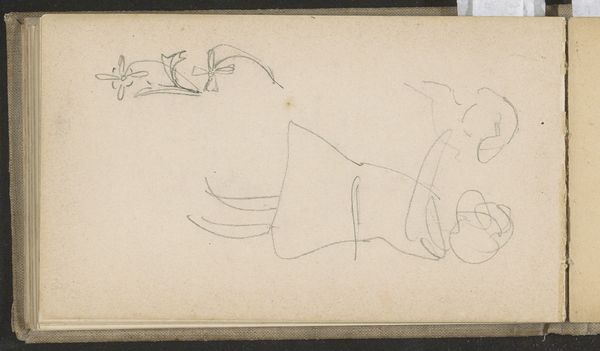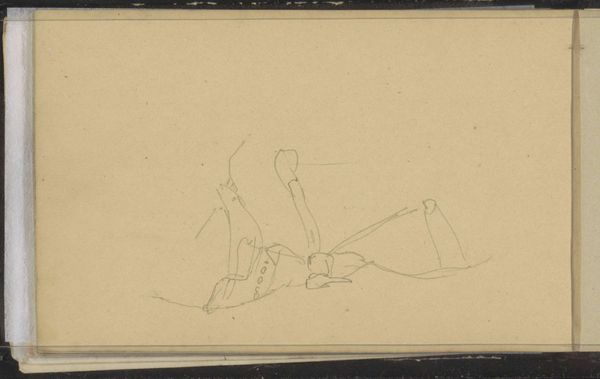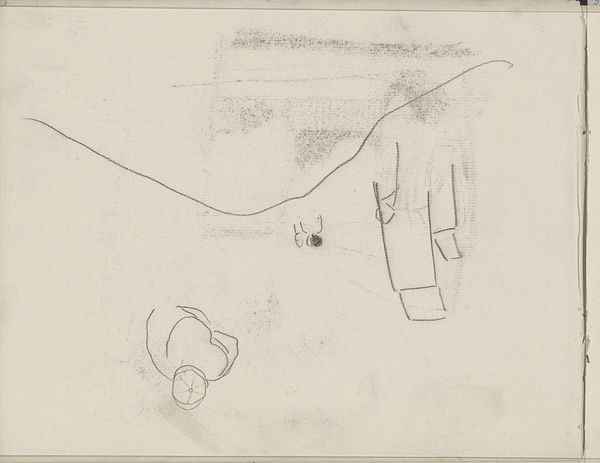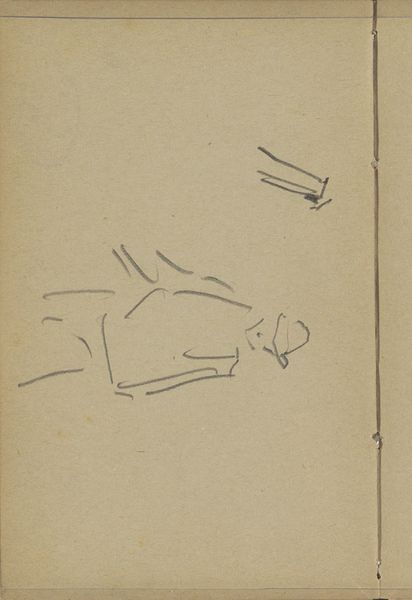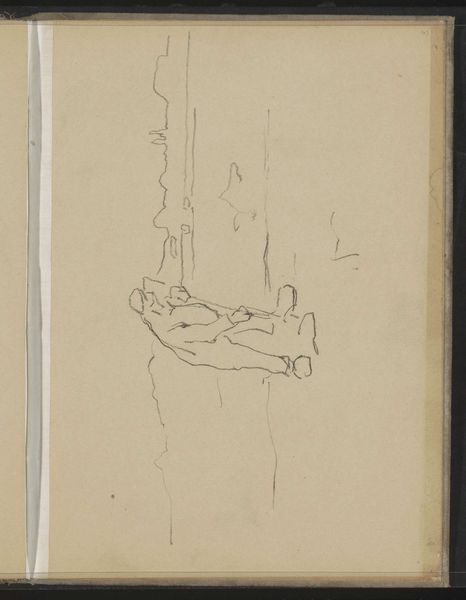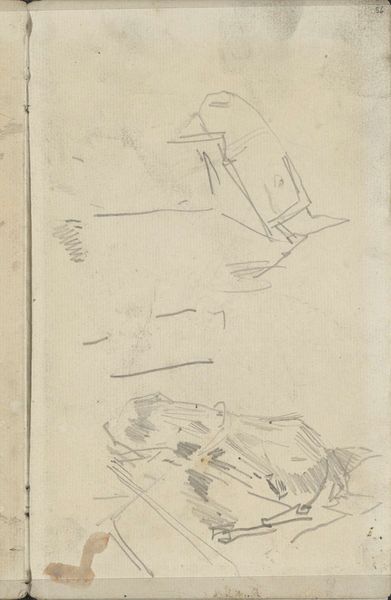
drawing, paper, pencil
#
drawing
#
landscape
#
figuration
#
paper
#
pencil
Copyright: Rijks Museum: Open Domain
Editor: So, this is "Figuurstudies," or "Figure Studies" by George Hendrik Breitner, from around 1880 to 1882. It’s a pencil drawing on paper and is currently held in the Rijksmuseum. The drawing is a series of rapidly sketched figures, almost like fleeting observations. What do you notice about these sketches from a historical viewpoint? Curator: The immediacy is really key here. Breitner was working during a time of immense social change in Amsterdam, with rapid urbanization and industrialization reshaping the city. I think what we see in these studies is an attempt to capture the dynamism of modern life, particularly of working-class people and places usually absent in other paintings. The sketchy style mirrors the fleeting nature of these moments, a deliberate choice reflecting a broader shift in artistic sensibilities at the time. What social classes did Breitner engage with, if we can determine from the picture? Editor: From what I can gather, the figures seem to depict soldiers and working-class individuals, or perhaps people simply going about their daily routines in an urban setting. The roughness kind of hides specifics, or almost makes them secondary to the whole feel. Curator: Exactly. And that blurring is important. Consider that this was also a period where photography was becoming increasingly accessible. Breitner was known for using photography himself. Drawing may not compete with photography, which can depict exactness; this freedom may permit exploration with abstraction and expression of the social landscape in an unfiltered way. How might we interpret Breitner's turn to depicting scenes of modern urban life through a historically sensitive lens? Editor: It almost feels like he's trying to democratize art. By depicting ordinary people in everyday situations, he is legitimizing their experiences as worthy subjects for art. And his focus goes away from idealized academic standards and towards a raw social realism. Curator: That’s insightful. Breitner aimed to portray Amsterdam without romanticizing or sanitizing it, engaging in what might be regarded as a radical aesthetic statement in his own way. His choices certainly resonated with the growing call for social reform and a greater understanding of urban poverty during the late 19th century. Thanks, that's given me a deeper respect for these "studies." Editor: Absolutely. I think that gives me a great foundation for further research.
Comments
No comments
Be the first to comment and join the conversation on the ultimate creative platform.



